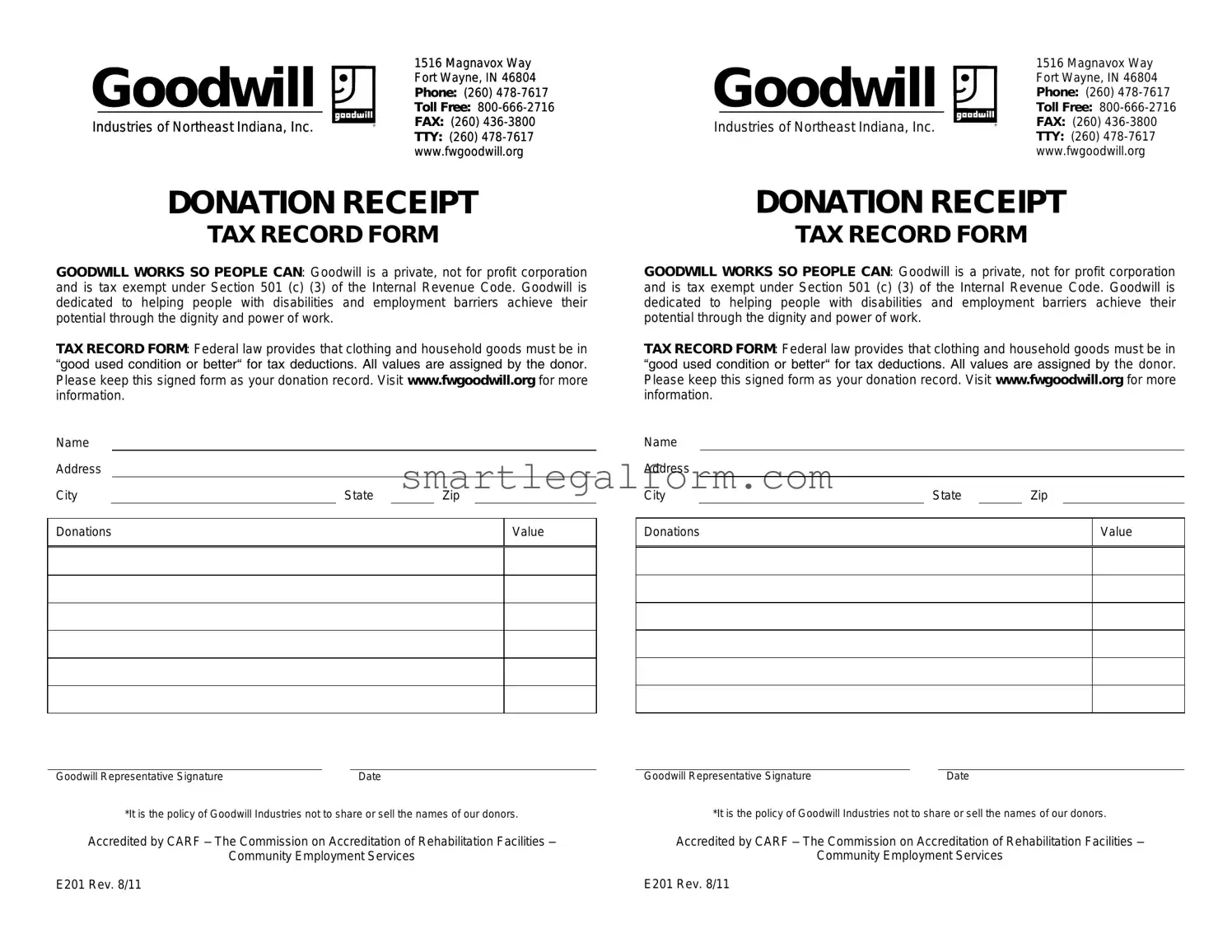When filling out the Goodwill donation receipt form, many individuals make common mistakes that can lead to confusion or issues later. One frequent error is failing to provide a complete description of the donated items. Without a clear list, it becomes challenging to assess the value of the donation, which can complicate tax deductions.
Another mistake is neglecting to estimate the value of the items. Donors often skip this step, thinking it’s unnecessary. However, having a reasonable estimate helps both the donor and Goodwill understand the donation's worth. Inaccurate or missing values can lead to complications during tax season.
Some people forget to sign the receipt. A signature is essential as it validates the donation. Without it, the receipt may not be accepted for tax purposes, leading to frustration for the donor when trying to claim deductions.
Additionally, individuals sometimes misplace the receipt after filling it out. Keeping the receipt in a safe location is crucial for record-keeping. Losing it can mean losing out on potential tax benefits, which can be a significant oversight.
Another common issue arises when donors fail to keep a copy of the receipt. While Goodwill provides a receipt, having a personal copy ensures that the donor has proof of the donation for their records. This can be particularly important if questions arise later regarding the donation.
People also occasionally overlook the date of the donation. This detail is vital for tax records. Without a clear date, it may be difficult to establish the timing of the donation, which can affect tax filings.
Some donors make the mistake of not checking the form for accuracy before submitting it. Errors in the information provided can lead to complications later. Taking a moment to review the form can prevent these issues.
Another mistake involves not understanding the difference between a donation receipt and a sales receipt. A donation receipt is for tax purposes, while a sales receipt is for purchases. Misunderstanding this can lead to confusion about what is required for tax deductions.
Lastly, individuals sometimes underestimate the importance of documenting their donations. Keeping detailed records, including photos and descriptions, can provide additional support if needed for tax purposes. This practice can save time and hassle in the long run.

